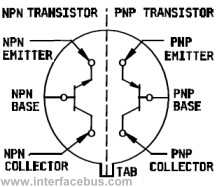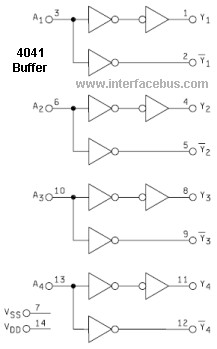Engineering Dictionary
"A"
"B"
"C",
"D",
"E",
"F",
"G",
"H",
"I",
"J",
"K",
"L",
"M",
"N",
"O",
"P",
"Q",
"R",
"S",
"T",
"U",
"V",
"W",
"X",
"Y",
"Z"
'Ca' to 'Cas', 'Cat' to 'Cg', 'Ch', 'Ci' to 'Cl', 'Cm' to 'Com',
'Com', 'Com' to 'Con', 'Con' to 'Coo', 'Cop' to 'Cq', 'Cr', 'Cs' to 'Cz'
Commutation. The act of a commutator in converting generator output from an ac voltage to a dc
voltage. Sequential sampling on a repetitive basis, of multiple data sources.
Commutative Law. In Boolean algebra this law states that changing the order of the terms in an
equation will not affect the value of the equation. Example: A + B = B + A; A x B = B x A.
Commutator. A mechanical device that reverses armature connections in motors and generators at the proper instant so that current continues to flow in only one direction. In effect, the commutator changes ac to dc. Refer to Motor Vendors. A device used to accomplish time-division multiplexing by repetitive sequential switching techniques.

Motor Commutator
The commutator consists of copper segments separated by an insulating material. These segments, attached to conductors in the rotor, provide electrical connections to the windings. The commutator receives electrical energy via a set of brushes that ride on the commutator.
Compact Disk. [CD] An optical disk used to store digital data, such as text, sound or video. A Compact Disk player is used to store or retrieve the information.
CompactPCI. Compact Peripheral Component Interface. An industrial version of the PCI standard [Peripheral Component Interface]. CompactPCI uses the Euro board format/size, but uses the same electrical standard as the consumer PCI interface bus. More detail on the CompactPCI Bus.
Compander. An acronym for COMpressor-exPANDER. A circuit that compresses and then expands the signal in amplitude. Normally a circuit compresses the signal [level] at one end of an interface than expanding the signal at the far end.
Companding. An operation in which the dynamic range of signals is compressed before transmission and is expanded to the original value at the receiver.
Comparator. A component that compares two analog variables and indicates the result of that comparison [see Voltage Comparator]. A device that compares two items of data and indicates the result of that comparison [8-input Magnitude Comparator].
Compensated Oscillator. A crystal or some other oscillator that uses internal circuitry to compensate for changes in temperature or voltage which would effect the output frequency of the oscillator. A Temperature Compensated TCXO Oscillator would be one such example. However the cost of the oscillator increases with the complexity and additional stability of the oscillator.
Compensating Windings. Windings embedded in slots in pole pieces, connected in series with the
armature, whose magnetic field opposes the armature field and cancels armature reaction.
Compensation. The process of overcoming the problems associated with high frequencies in an
amplifier. Additional elements introduced into the circuit to off-set the undesirable characteristics of a process being controlled. The shaping of the frequency response of an amplifier or other device to achieve a more desirable response.
Complement. A number or state that is the opposite of a specified number or state. The negative of a
number is often represented by its complement. An inversion, a logic gate that outputs a low [or high] when presented with a high [or low]. The circuit diagram to the right shows a buffer that outputs both a true [Y] or complement [inverted] version [Y-bar] output of the input signal.
Complementary Colors of Light. The colors of light produced when two
of the primaries are mixed in overlapping beams of light. The complementary colors of light are
magenta, yellow, and cyan.
Complementary Configuration. A semiconductor component that contains at least two similar independent devices of opposite polarity [P-Channel and N-Channel MOSFET for example].
Complementary Law. In Boolean algebra this law states that the logical addition of a quantity and
its complement will result in 1 and the logical multiplication of a quantity and its complement will
result in a product of 0.
Complementary Metal Oxide Semiconductor. [CMOS] Complementary MOS. A type of integrated circuit structure which uses both n-type and p-type enhancement-mode devices fabricated on the same semiconductor die. Also see Standard CMOS Logic IC Vendors. CMOS devices use two MOS FETs connected between Vdd and ground which work in inverse so that there is no direct path between Vdd and ground. When the n-type is conducting the p-type is off, or when the n-type is off, the p-type is conducting.
Complementary Push-Pull. A Push-pull amplifier that uses both an NPN and PNP working in opposite polarities. A Complementary Push-Pull amplifier may also use a Complementary Transistor.
Complementary Transistor. A pair of transistors which reside in the same package, one being an NPN and the other being a PNP transistor. Refer to the graphic in the right side-bar.
Complement Number. A number that when added to another number gives a sum equal to the base
of the number system of operation. For example, in the decimal number system, the complement of 1 is
9.
Complex Conjugate Matching. Impedance matching to insure maximum power transfer by using the Complex Conjugate of the source impedance for the load impedance. That is if the source is capacitive, than the load is made inductive by the same amount.
Complex Tone. A sound wave composed of a number of sine waves of different frequencies.
Complex Wave. A waveform other than a sine wave. A wave that is produced by
combining two or more pure tones at the same time.
Compliant Pin. A pin used with a Printed Circuit Board [PCB] as an interconnect. The pin is press-fit and solder-free. In most cases the pin[s] are the board mount side of a connector. Read more on Compliant Pins.
Component. An assembly, or part thereof, that is essential to the operation of some larger assembly and is an immediate subdivision of the assembly to which it belongs.
Composite Video. A video signal in which synchronizing information (pulses) and picture information, including chroma, i.e., color, information are combined. Composite Video Interface Description.
Compound-Wound Motors and Generators. Machines that have a series field in addition
to a shunt field. Such machines have characteristics of both series- and shunt-wound machines. Companies that Manufacture Motors.












